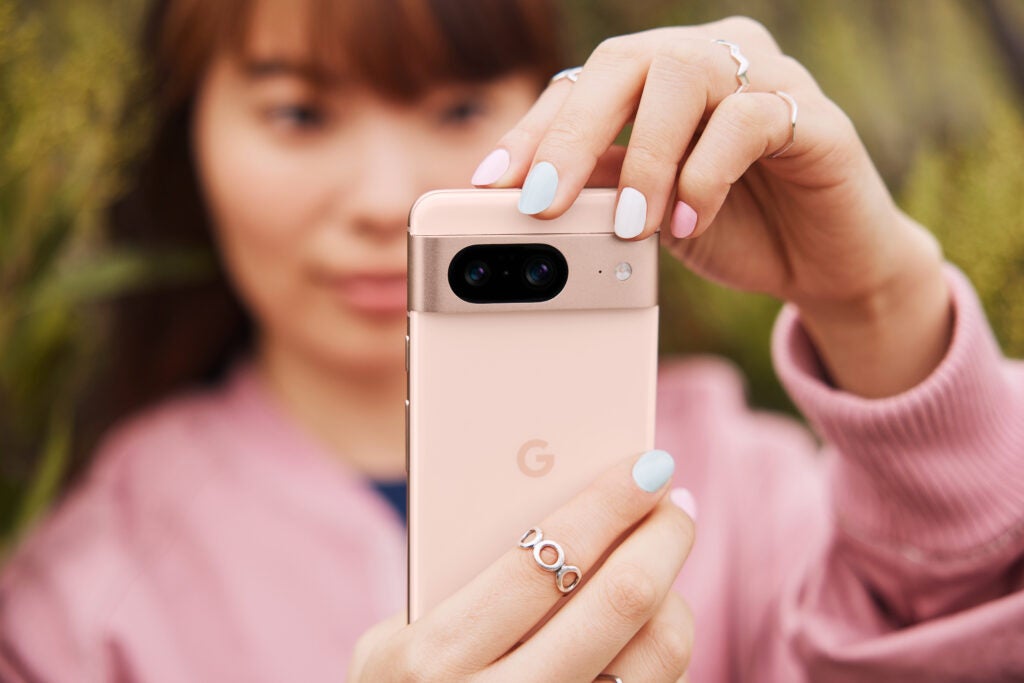Samsung just announced a brand-new mid-tier smartphone to its popular Galaxy S23 lineup, with the Galaxy S23 FE.
It’s been a fantastic year for mobile phone enthusiasts; Google launched the Pixel 8 and Pixel 8 Pro just this week, and now, Samsung just announced a brand-new addition to its Galaxy S23 range.
The Galaxy S23 FE is similar to the Pixel 7a and iPhone SE (2022), being a more affordable variation of the main line of handsets. It comes with a more digestible price tag but misses out on a few premium features, making it an alluring option for those who are not looking for all the extra bells and whistles.
We’re going to be running through both the Pixel 8 and Galaxy S23 FE so you can decide which handset is best for you. It’s worth noting that we haven’t been able to review either of these phones just yet, but we can glean a lot from their specs to see how they stack up on paper.
Triple-camera setup on the Galaxy S23 FE
The Galaxy S23 FE has an impressive camera setup for an affordable device. It packs a 50-megapixel main lens, a 12MP ultrawide sensor, an 8MP telephoto sensor and a 10MP front camera. Samsung is known for producing fantastic camera phones, so we expect the 50MP sensor to steal the show, although we can’t say anything definitive until we get to try the camera out for ourselves.
The Pixel 8 comes with a more modest setup in comparison, including a 50-megapixel wide sensor and a 12MP ultrawide camera with autofocus. The front camera is 10.5MP with autofocus, which should make selfies crisp and detailed. One of the best things about Google handsets is its nifty camera features, including Magic Eraser – which can remove unwanted objects and people from the background of photos – as well as Real Tone, which better represents all skin tones in photos, according to Google.

Both come with a dynamic refresh rate
Both the Samsung Galaxy S23 FE and Google Pixel 8 come with similar displays. The Galaxy S23 FE packs a 6.4-inch FHD+ screen with Dynamic AMOLED 2X technology, as well as an adaptive refresh rate that can jump from 60Hz to 120Hz. An adaptive refresh rate ensures that the display can jump up high during intensive tasks for a smoother experience while dropping down low to preserve battery life.
The Pixel 8 has a slightly smaller screen, at 6.2 inches. It comes with an Actua Smooth Display that can also jump from 60Hz to 120Hz, with a resolution of 1080×2400. Google claims that the Pixel 8 has a peak brightness of 2000 nits. With such similar specifications, it’s likely that the screens will look very similar, but we’ll have to wait and see for now.
The Galaxy S23 FE comes with two different processors
Google kitted out the Pixel 8 with the latest Tensor G3 chipset, the same processor housed inside the Pixel 8 Pro. Google claims that the Tensor G3 will be more adept at detecting and filtering out spam calls and will even be capable of removing and editing background noise in videos with Audio Magic Eraser. The new AI abilities should make the Pixel 8 more accomplished than its predecessor, the Pixel 7, but we will have to see how it handles in our testing.
Samsung made a slightly confusing choice in terms of the chipset inside the Galaxy S23 FE. For the North American crowd, it will come with the last-generation Qualcomm Snapdragon 8 Gen 1. For the Europeans, it will pack the Exynos 2200. Both of these chips are around a year old, so it’s unlikely that either will offer the same performance as the Pixel 8, but it should still be more than serviceable for day-to-day tasks and some light gaming.

The Pixel 8 is more expensive
Google kept the price of the Pixel 8 relatively low, with a starting price of just $699/£699. It comes in three colours, including Hazel, Rose and Obsidian and packs 8GB LPDDR5X RAM with either 128GB or 256GB of storage.
Since the Galaxy S23 FE is designed to be more affordable, it’s no surprise that it’s the cheaper option out of the two. It comes with a reasonable starting price of just $599/£599 and can be found in several colours, including Mint, Cream, Graphite, Purple Indigo and Tangerine, with the last two colours being exclusive to the Samsung website. The storage and RAM are the same as the Pixel 8, at 8GB RAM and 128GB or 256GB storage.










